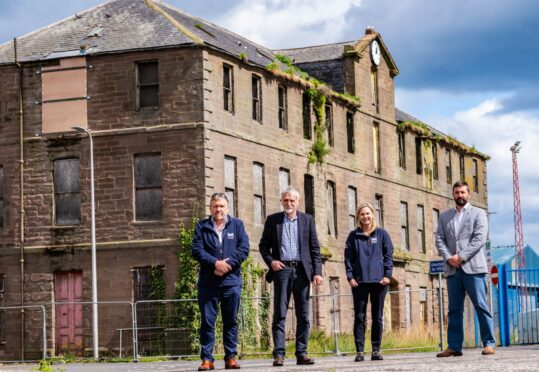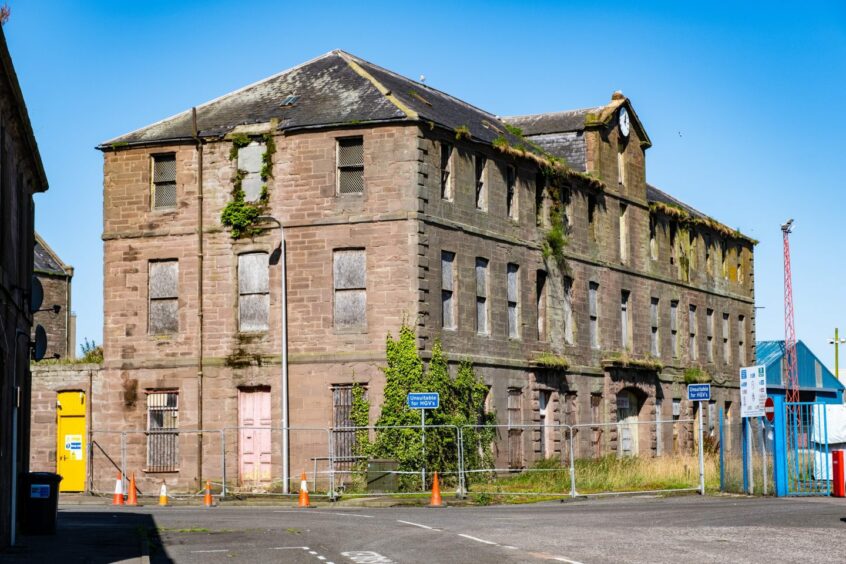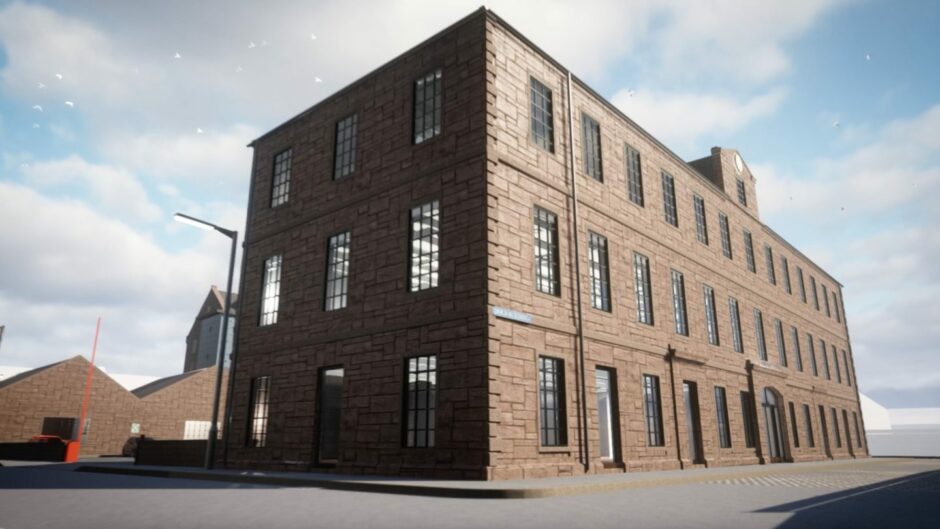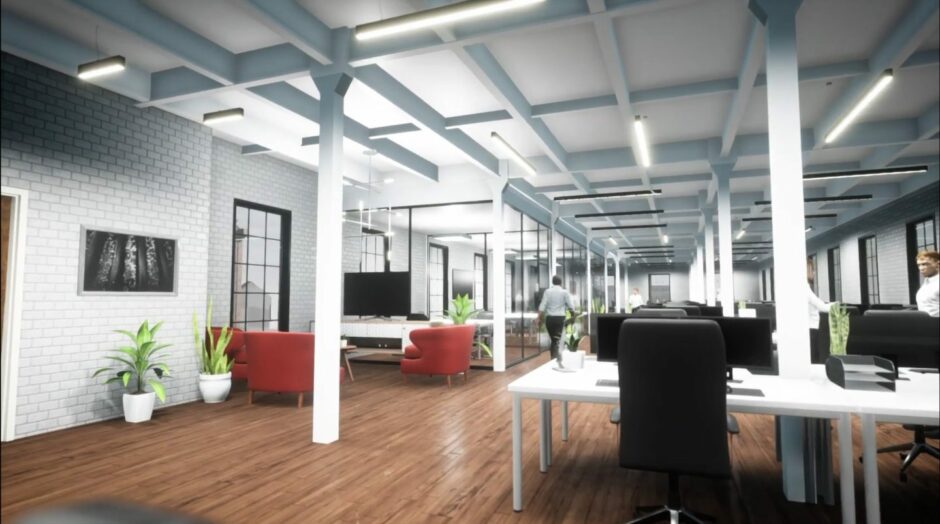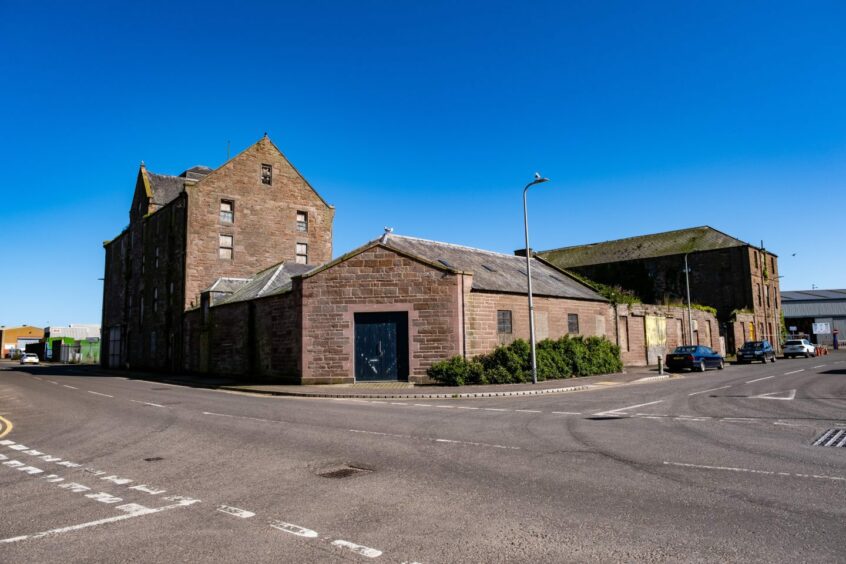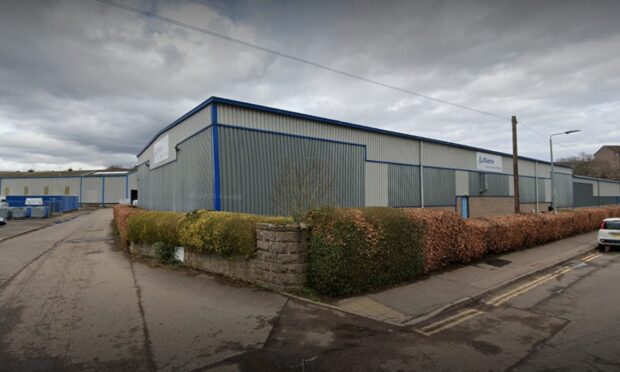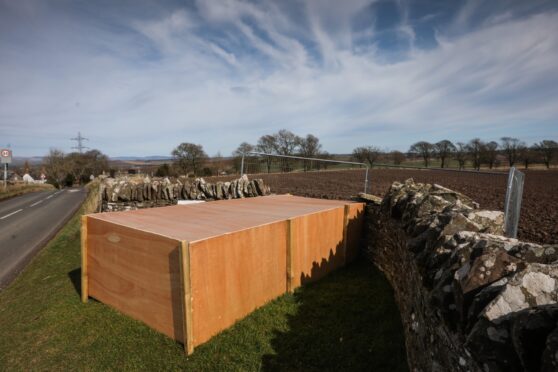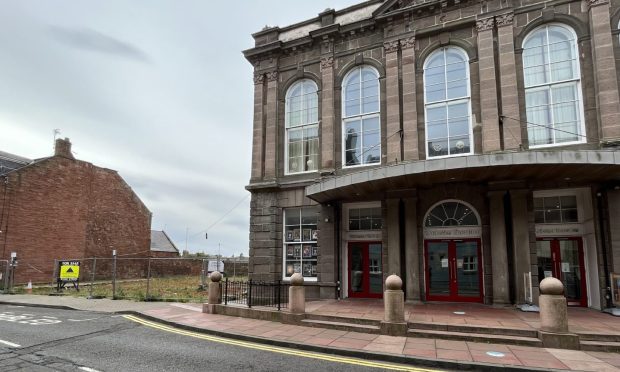Montrose Port Authority has bought the iconic quayside Customs House in a move which will see the 19th century building restored to a symbol of the harbour’s modern-day prosperity.
The B-listed Customs House and granary store reflected the importance of Montrose in the world of international trade and shipping as the port grew.
But the imposing buildings have fallen into a state of near dereliction.
North-east engineering firm Whittaker Group previously owned the buildings.
The Stonehaven-based firm planned to create an office and training complex there.
In March, Angus Council granted planning permission for the project.
Significant growth
However, following a period of significant growth, Montrose Port Authority has bought the B-listed buildings and adjoining land.
The trust port says it wants to preserve it as an important piece of local maritime heritage
MPA’s plans will transform it into a commercially viable space and a vibrant community hub.
It is now hoping to bring other interested parties on board with the exciting project.
Illustrative images of how the redeveloped building might look have also been released.
Plans for the transformation are yet to be lodged with Angus Council.
‘Jewel waiting to be polished’
CEO Tom Hutchison said: “Montrose Port Authority is fully committed to preserving the heritage of our region while embracing growth and innovation.
“We believe that the Customs House, with its rich history, is a jewel waiting to be polished.
“In the spirit of collaboration, we are working closely with our stakeholders on the design and development of this iconic site and welcome the input of interested parties as we ensure the future of these buildings reflect the aspirations and values of the business and local community.”
Angus Council leader Beth Whiteside welcomed the acquisition.
“These 19th century listed buildings hold a special place in our local history,” she said.
“This project not only preserves the legacy of our past, but marks an exciting new chapter of opportunities for the local community and rejuvenates a tired area of the coastal town.
“I look forward to seeing Montrose Port drive the redevelopment forward, creating another great asset for our region.”
Building at risk
The Customs House has been on Scotland’s buildings at risk register for more than 20 years.
It describes the three-storey property as a 13-bay classical Custom House and warehouse with ancillary structures along three streets forming a quadrangle.
It was built in the 1850s, around a decade after the creation of Montrose’s wet dock.
Original lifting gear remains in the building and it could be saved as a feature of the Port Authority redevelopment.
